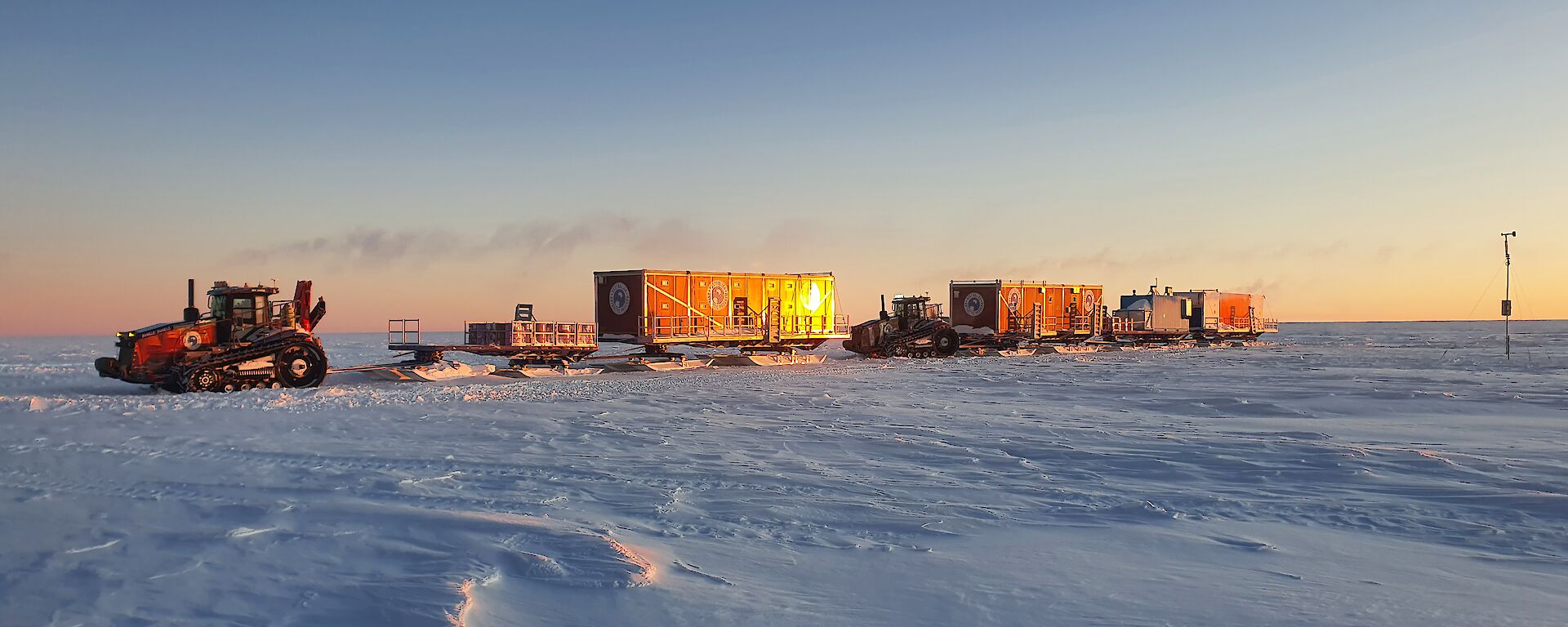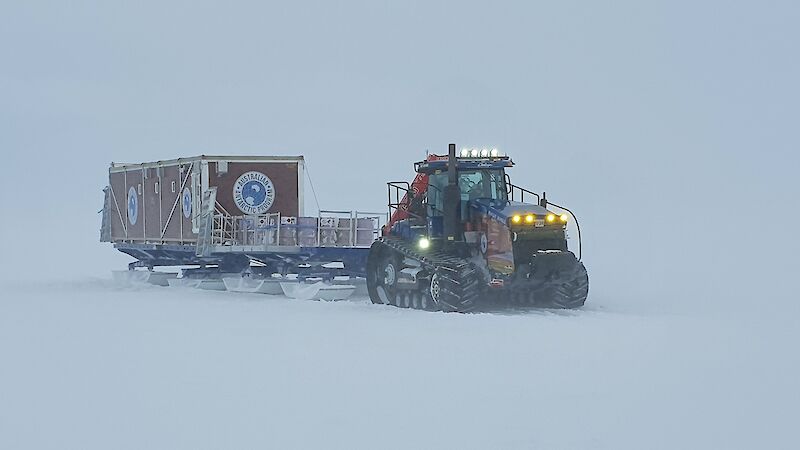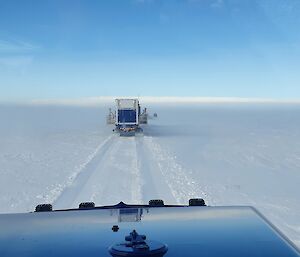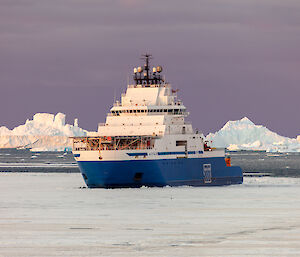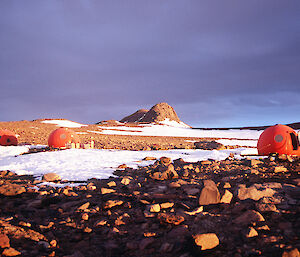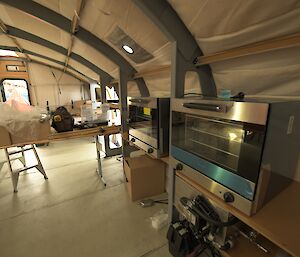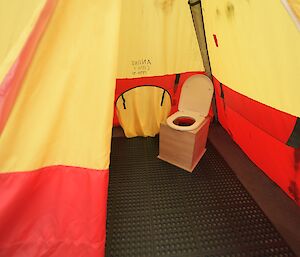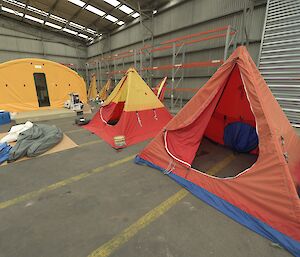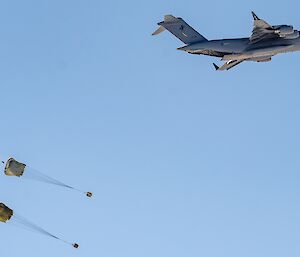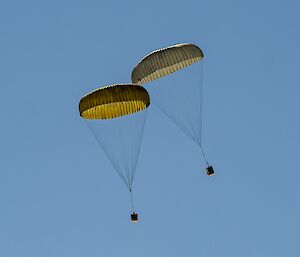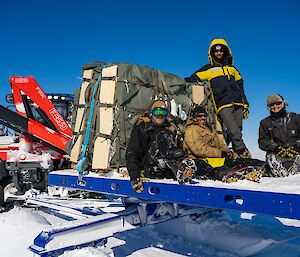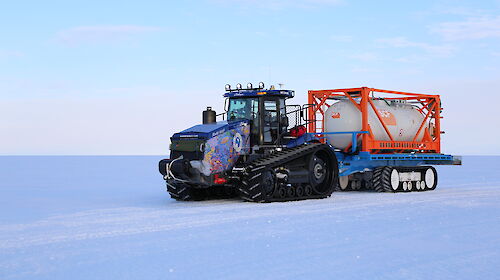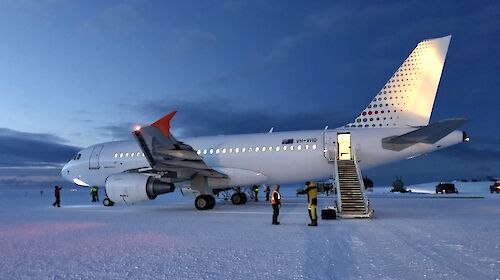Once at 3,000 metres elevation, a team of 10 expeditioners, including scientists, mechanics and a doctor will establish a camp to support drilling for an ice core at least a million years old.
Traverse leader Sharon Labudda, currently at Casey, said preparations are progressing despite challenging weather.
“It’s very exciting to be part of this project,” Ms Labudda said.
“The traverse will comprise five tractors, two snow groomers and 14 sleds. Loaded onto these sleds are our containerised living vans, generators, fuel and cargo essential for setting up the ice core drill tent.”
“It will take at least two weeks to travel from Casey to Little Dome C. It could take longer if we experience difficult snow conditions for the tractors towing the heavy sleds, bad weather including blizzards or just cold temperatures like minus 50 degrees.”
Australian Antarctic Division Chief Scientist Professor Nicole Webster said the project was one of the most important polar science quests ever undertaken by Australia.
“Australia has a long history of venturing deep into the frozen continent and this summer will be the most ambitious mission in 20 years,” Prof Webster said.
“Once the summer camp is established, drilling deep enough to find ice at least a million years old will take five years.”
“This record will help explain why the cycle of ice ages changed from a regular 41,000-year cycle to an ice age every 100,000 years.”
“Australia is a science leader in East Antarctica and we’re extending our reach into the continent to expand our knowledge of how ice sheets are responding to climate change and the role of Antarctica in the global climate system.”
A second deep field camp will also be re-established at Edgeworth David Base, 440 kilometres west of Casey station near the Denman Glacier.
It will support a three year science campaign led by the AAD and research partners, Securing Antarctica’s Environmental Future (SAEF), the Australian Centre for Excellence in Antarctic Science (ACEAS) and the Australian Antarctic Program Partnership (AAPP).
AAD general manager operations and safety Charlton Clark said the alliance of researchers would rely on the hard work of a small advance team this summer.
“A team of just five people, including carpenters, a field training officer and field leader will spend three months at the site,” Mr Clark said.
“Their work preparing facilities will be absolutely critical when up to 40 scientists arrive in late 2023. Once there the scientists will undertake research into climate issues impacting the glacier and the wider region.”
Overall, the 2022–2023 season will see seven ship voyages by two chartered vessels, icebreaker MPOV Aiviq and ice-strengthened cargo ship Happy Diamond.
Mr Clark said RSV Nuyina is expected to return from maintenance in Singapore in the first quarter of 2023.
“Building supplies will also be transported to continue the modernisation and long term operation of Macquarie Island research station,” Mr Clark said.
Flights will resume from Hobart International Airport to Wilkins Aerodrome between October and March.
The Australian Defence Force will continue to provide support through the transport of some passengers and cargo as part of Operation Southern Discovery.
Antarctic 2022–2023 season fast facts
- Seven ship voyages
- 18 flights between Hobart International Airport and Wilkins Aerodrome
- Two planes and two helicopters to support intracontinental flights
- 420 expeditioners including tradespeople, scientists, operations and support personnel
- 23 science projects
- 3,200 tonnes of cargo south, 900 tonnes of cargo north

